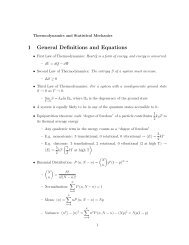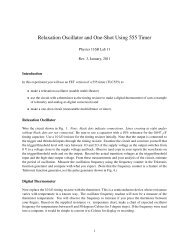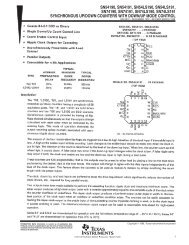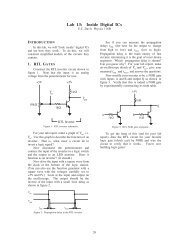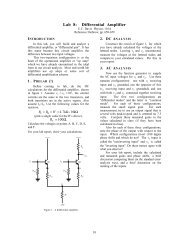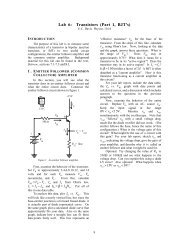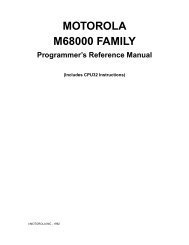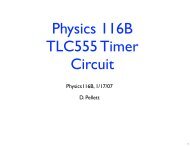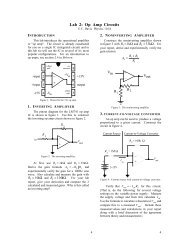Research Interests Nemanja Kaloper - Department of Physics
Research Interests Nemanja Kaloper - Department of Physics
Research Interests Nemanja Kaloper - Department of Physics
Create successful ePaper yourself
Turn your PDF publications into a flip-book with our unique Google optimized e-Paper software.
in addition to signaling new physics, would strongly support the existence <strong>of</strong> the large energy desert<br />
between the Standard Model and the scale <strong>of</strong> quantum gravity. Thus the possible reward may be<br />
great: a clear-cut evidence <strong>of</strong> new physics which may be inaccessible to observation in lab-based<br />
experiments. ii) Devising new explanations for the dimming <strong>of</strong> Type Ia supernovae. At present,<br />
observations <strong>of</strong> faint supernovae are the strongest evidence for cosmic acceleration. However if<br />
only a fraction <strong>of</strong> the photons departing supernovae reach us, the supernovae would appear fainter<br />
without cosmic acceleration. I have proposed such an explanation recently, invoking an axion-like<br />
particle with couplings to the photon. In the presence <strong>of</strong> extra-galactic magnetic fields, <strong>of</strong> order<br />
nano-Gauss, coherent over Mpc-sized domains, a photon can turn into an axion evading detection<br />
on the Earth. A supernova would then appear fainter even if the Universe is decelerating. This<br />
changes quite dramatically the nature <strong>of</strong> dark energy, avoiding the cosmological event horizon. The<br />
axion could also provide a source <strong>of</strong> ultrahigh-energy cosmic rays. Finally, some recent analysis<br />
indicate that the Universe may be expanding even faster than allowed with normal dark energy,<br />
suggesting the interpretation in terms <strong>of</strong> the so-called “phantom” field, which is a ghost with illdefined<br />
Hamiltonian that is not bounded from below. It would lead to a future Big Rip singularity.<br />
In theories with the axion, this can be more naturally explained without any “phantoms”, simply<br />
as a combined dimming effect coming from both the non-singular dark energy and the conversion<br />
<strong>of</strong> photons into axions. iii) Explaining the unknown origin <strong>of</strong> the extra-galactic magnetic fields<br />
by combining inflation with the dynamics <strong>of</strong> extra dimensions. Inflationary perturbations could<br />
squeeze the magnetic field into coherent states, which can be amplified by the extra-dimensional<br />
dynamics. In models where the extra dimensions are initially small, inflation is followed by an epoch<br />
<strong>of</strong> expansion <strong>of</strong> extra dimensions, during which the four-dimensional world shrinks, enhancing the<br />
primordial magnetic fields. This may provide a new window into the extra-dimensional physics.<br />
• High Energy Frontiers, where I intend to pursue new ideas in high energy physics as<br />
a method <strong>of</strong> solving cosmological problems. Among the aims are: i) Developing new models <strong>of</strong><br />
inflation. While inflation is the best framework for explaining the origin <strong>of</strong> the Universe, it is still<br />
unclear how it should be implemented in fundamental theory. Inflation requires the existence <strong>of</strong><br />
light degrees <strong>of</strong> freedom with very flat potentials and positive vacuum energy, which are hard to<br />
obtain from first principles. A new direction to pursue is to incorporate inflation in new models<br />
with non-minimal couplings to gravity and matter, such as brane-motivated constructions where<br />
moduli can be inflatons. ii) Exploring modifications <strong>of</strong> gravity to attack the cosmological constant<br />
problem. Cosmological constant problem is presently the greatest <strong>of</strong> all the unsolved problems in<br />
fundamental physics. Our best estimates <strong>of</strong> the cosmological vacuum energy density overshoot the<br />
observational bounds by at least 60 orders <strong>of</strong> magnitude. This clearly shows that our understanding<br />
<strong>of</strong> effective field theory coupled to gravity at very large scales is incomplete. A possible way around<br />
the cosmological constant problem, which I plan to pursue, is to modify gravity in the far infrared.<br />
This may account for the small cosmological acceleration by a weakening <strong>of</strong> the gravitational<br />
impact <strong>of</strong> a very homogeneous distribution <strong>of</strong> energy in the Universe. A model <strong>of</strong> this type has<br />
been proposed by Arkani-Hamed, Dvali, Dimopoulos and Gabadadze. However in its original form<br />
this interesting model is not consistent with the usual general covariance. This malady can be cured<br />
by additional modifications which involve higher powers <strong>of</strong> curvature and restore the symmetry <strong>of</strong><br />
the model. It remains to determine the full series <strong>of</strong> such terms through an iterative procedure,<br />
which I am currently developing. Once this is in place, the consequences <strong>of</strong> modifications <strong>of</strong> gravity<br />
at large distances can be explored in detail.<br />
• Holography and Formal Theory, where I am planning to continue to search for the implications<br />
<strong>of</strong> holography for low energy physics. At the moment, I am planning to pursue the following<br />
two directions: i) Holography and cosmological initial conditions. A remaining conundrum in the<br />
2



